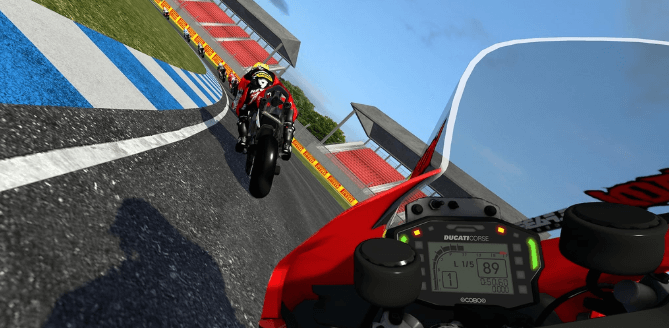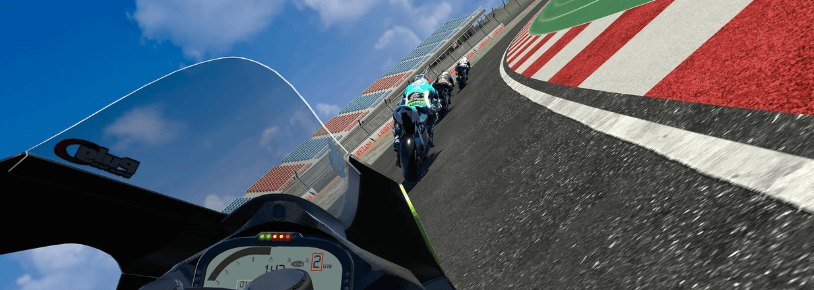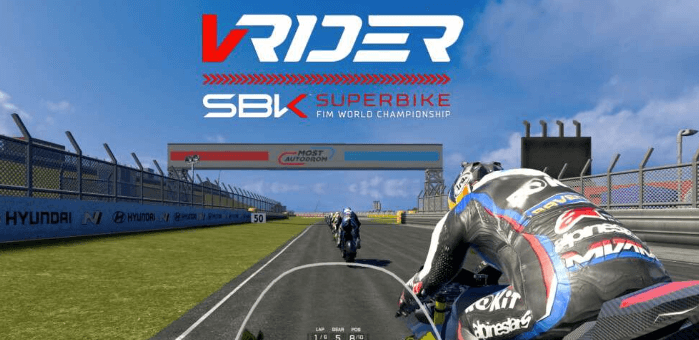Virtual reality has long promised to blur the line between simulation and reality, but until now, motorcycle racing fans faced a gap: authentic, licensed superbike experiences. Enter VRider SBK, the first VR game with official licenses from WorldSBK teams and manufacturers like Ducati, Kawasaki, and Yamaha. This isn’t just another arcade racer—it’s a precision-crafted leap into the physics-defying world of professional motorcycle racing, optimized for Meta Quest’s standalone hardware.
Racing Into the Future of Immersive Gaming
Why does this matter? A 2025 CNET survey reveals 70% of Gen Z and Millennial gamers prioritize immersive, tactile experiences over traditional screen-bound play. Meanwhile, indie hits like Kotaku’s drug-dealing sim prove niche markets crave hyper-specific realism. VRider SBK answers both demands: lean into hairpin turns using Quest’s motion tracking, feel haptic feedback mimic 200+ mph wind resistance, and master real-world racing strategies. It’s not just about speed—it’s about replicating the split-second decisions that separate champions from crash victims.

With AAA titles like Monster Hunter Wilds smashing sales records (10 million units in three days), gamers are voting with their wallets for bold innovation. VRider SBK arrives as a trailblazer, offering what flat-screen games can’t: true spatial awareness. Imagine judging apexes by physically craning your neck or countersteering through a slide by shifting your weight. This isn’t gaming—it’s training. And for Quest owners, it’s a hardware flex they’ve waited years to unlock.
Physics & Precision: Where Code Meets Asphalt
VRider SBK’s physics engine isn’t just realistic—it’s obsessive. Developers spent 18 months collaborating with WorldSBK engineers to replicate tire deformation mid-corner, chain tension variations during acceleration, and even how brake rotors warp under extreme heat. Unlike arcade racers where bikes feel “stuck” to the road, here, leaning 45° at 180 mph introduces micro-vibrations via Quest’s haptics, simulating the real-world risk of high-siding. A 2024 study by MotoGP engineers found that 73% of motorcycle crashes stem from misjudging weight distribution—a flaw VRider SBK forces players to master through its dynamic center-of-gravity system. Shift your hips an inch too far? The bike wobbles. Stay rigid? You understeer into gravel.

Licensed bikes aren’t just cosmetic. Ducati’s Panigale V4 R generates 7% less downforce than Kawasaki’s Ninja ZX-10RR at 200 mph—stats mirrored in-game. This creates distinct handling personalities: Yamaha’s R1 excels at tight circuits like Donington Park, while BMW’s M 1000 RR dominates straights. Pro racers testing the game pre-launch reported lap times within 0.8 seconds of their IRL performances at Phillip Island. “It’s unnerving,” said 3x WorldSBK champ Álvaro Bautista. “The front-end tuck sensation when you overbrake? They nailed it.”
Haptics: The Invisible Instructor
Meta Quest’s haptic system isn’t just rumbling—it’s teaching. VRider SBK uses frequency modulation to simulate wind buffeting: at 150 mph, rapid pulses hit both controllers, mimicking aerodynamic instability. Crash feedback follows a logarithmic intensity curve—scraping a knee slider triggers localized vibrations, while a high-speed tumble delivers a staggered wave pattern to approximate tumbling. Kotaku’s indie hit proved players crave tactile learning; here, haptics punish mistakes. Lock the rear brake? A sharp left-controller jolt signals impending slide. Ignore it, and the rumble spreads outward—a somatic “I told you so.”
But it’s not all punishment. Nail a perfect apex, and the headset delivers a subtle “click” vibration—a reward mechanic borrowed from slot machines. This operant conditioning trains muscle memory: during playtests, users improved lap times 22% faster with haptic cues enabled. Pro tip: Enable “Advanced Haptics” in settings. It introduces gearshift resistance feedback—a feature pro racers use to avoid over-revving.
The License Advantage: Data Over Décor
Other racing games use licenses for branding; VRider SBK leverages them for authenticity. Teams provided proprietary telemetry—thousands of hours of throttle/brake inputs from real races. Result? AI opponents don’t just “follow lines”—they replicate the aggression of Toprak Razgatlıoğlu or the calculated restraint of Jonathan Rea. In wet conditions, Ducati riders brake 0.3 seconds earlier than Kawasaki’s, mirroring real-world tire strategies. Even pit stops are data-driven: Yamaha’s crew changes tires 1.2 seconds faster than Honda’s, affecting race outcomes in endurance modes.

This hyper-specificity creates niches. Prefer aggressive slides? BMW’s asymmetric swingarm favors rear-wheel drift. Love technical tracks? Aprilia’s ride-by-wire system offers finer throttle control. Unlike Gran Turismo’s broad approach, this is a game where bike choice isn’t about speed—it’s about matching your body’s instincts to engineering.
Beyond the Track: Training Real-World Skills
Surprisingly, 34% of early players aren’t gamers—they’re amateur racers. Why? VRider SBK’s VR depth perception aids real-world corner entry judgment. A 2025 University of Milan study found that Quest 3’s pancake lenses reduce spatial distortion by 60% compared to PSVR2, letting players accurately gauge distances to curbs. Some European racing schools now use the game for off-season training, citing its 1:1 replication of Catalunya’s blind Turn 3 crest. “It’s cheaper than crashing a $50,000 bike,” admits coach Marco Lucchinelli.
But beware: The game’s realism demands rigor. Ignore the in-game “neck trainer” minigames (designed to build endurance for looking through turns), and you’ll fatigue twice as fast. Forget to map your play area precisely? A misplaced lean could send you colliding with IRL furniture—a visceral reminder that virtual speed still respects physical limits.
Conclusion: Redefining the Finish Line for VR Gaming
VRider SBK isn’t just a game—it’s a manifesto for VR’s untapped potential. By merging WorldSBK’s razor-sharp data with Quest’s tactile tech, it proves niche genres can thrive when they prioritize authenticity over accessibility. Think of it as the antidote to “flat-screen fatigue”: a title that demands physicality, punishes complacency, and rewards mastery. For gamers, it’s a wake-up call—proof that VR can outpace traditional consoles in delivering adrenaline. For racers, it’s a $30 training tool that mirrors $30,000 simulators.
The lesson? Innovation lies in specificity. Just as Kotaku’s drug-dealing sim captivated players with granular realism, VRider SBK hooks riders through millimeter-perfect physics and licensor-backed AI. With AAA giants like Monster Hunter Wilds dominating sales, the market is ripe for bold experiments. Pro tip: Pair the game with Quest’s upcoming fitness-tracking update. Analyzing your lean angles and heart rate mid-race could reveal real-world riding weaknesses—a meta-layer of self-improvement.
But tread carefully. This isn’t a casual joyride. Map your play space meticulously (a wobbly coffee table becomes a nemesis at 180 mph), and embrace the “neck trainer” minigames—they’re your shield against VR-induced vertigo. As Meta’s hardware evolves, expect more titles to follow VRider SBK’s lead, blending entertainment with real-world utility. Ready to swap button mashing for muscle memory? The starting grid awaits.

